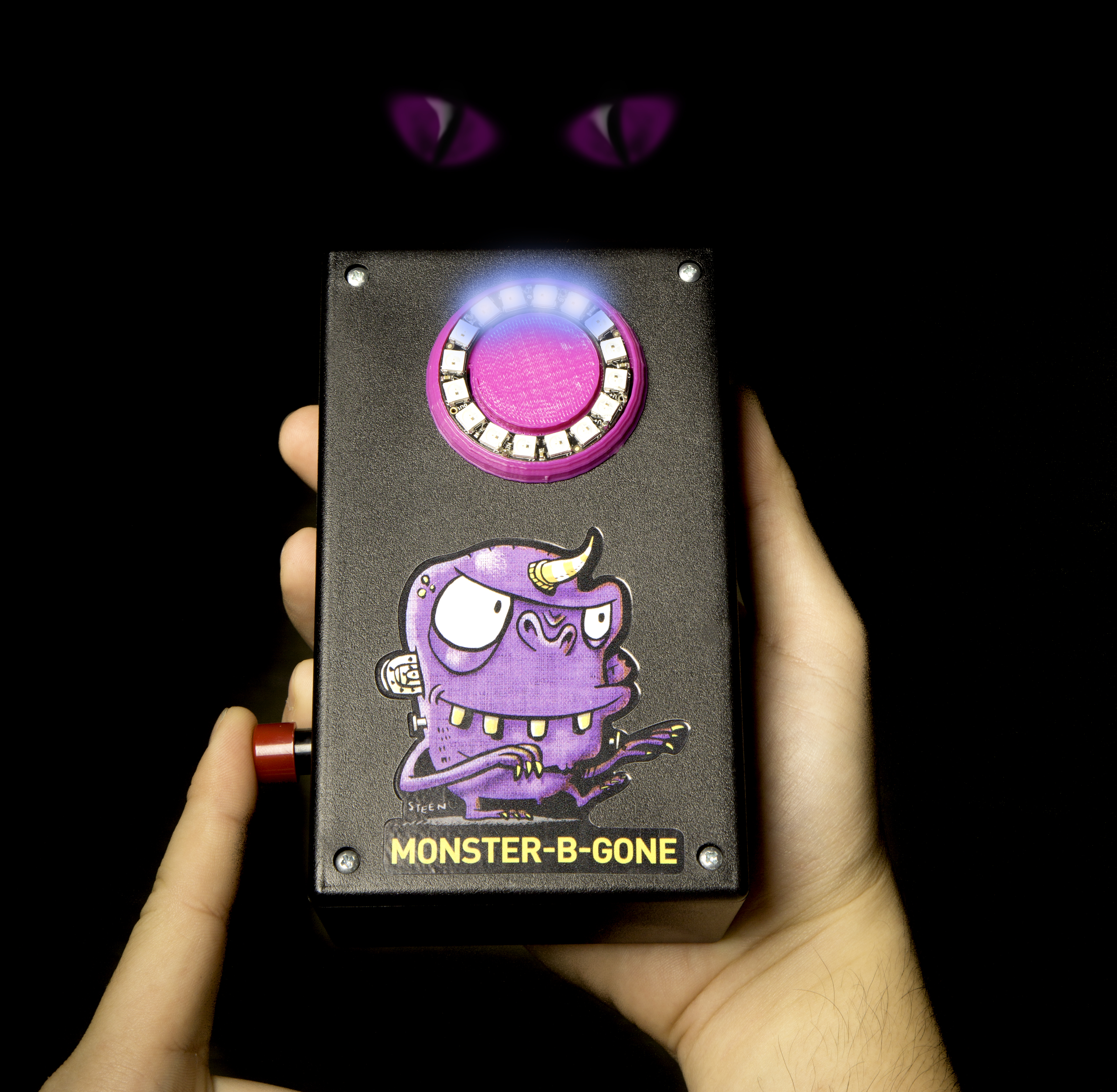
Do you have a child who worries about lurking beasts in his or her bedroom? Are you weary of inspecting closets for fanged creatures? Are your knees sore from examining beneath the bed for clawed critters?
If so, then the Monster-B-Gone is just the solution you need to confirm a fiend-free room for your youngster. Even better, it’s easy for kids to operate, requiring no adult supervision.
Just push the button — the swirling blue lights let your child know a scan of the surroundings is taking place. Of course, the blue light combines with a beyond-human-hearing ultrasonic wave (um, yeah, that’s it), unpleasant to any monster’s eyes, ears, or antennae. So any monsters within, say, half a mile (800 meters) will immediately disperse and return to their places of origin. When the light turns green, the room is clean.
If you so choose, the Monster Detector will occasionally detect a monster — red alert! — but a subsequent scan will green-light the room again. Whew. Children, sleep tight.
Build Your Monster-B-Gone
The Monster-B-Gone is easy to assemble in a couple of hours, and costs less than $40. Basic soldering skills are required; an understanding of simple circuits and basic electronics is useful, but not necessary if the steps are carefully followed. A drill press or handheld electric drill is needed for part of the assembly.
The NeoPixel LED ring used in this project can be mounted directly on the top of the project box, or you can 3D-print an optional shell for the LED ring. Holes will still need to be drilled through the top, but the shell gives the project a more finished look.
Most of the project’s parts can be purchased from any local electronics supply store, but a few will need to be ordered online. You’ll also need an internet connection to download the free software used for the Monster-B-Gone’s microcontroller (an Adafruit Trinket), and the Monster-B-Gone logo if an adhesive sticker is desired.



















